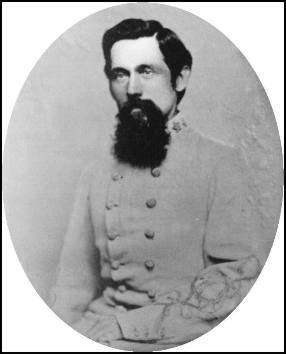Nickname(s) Gabe Name Gabriel Wharton | Rank Brigadier General Years of service 1861–65 | |
 | ||
Allegiance United States of America, Confederate States of America | ||
Gabriel Colvin Wharton (July 23, 1824 – May 12, 1906) was an American civil engineer and soldier who served as a general in the Confederate Army during the American Civil War. After the war he was a politician and later resumed his engineering work.
Contents
Early life and career
Wharton was born in Culpeper County, Virginia, in the summer of 1824. He entered Virginia Military Institute in Lexington on September 1, 1845. Wharton graduated on July 5, 1847, finishing 2nd out of 12 cadets as a "distinguished graduate."
After leaving VMI he then became a civil engineer. Later Wharton moved to the Arizona Territory and took up work as a mining engineer.
Civil War service
At the start of the American Civil War in 1861, Wharton chose to follow his home state of Virginia and the Confederate cause, and entered the Confederate Army. He was appointed a major in the 45th Virginia Infantry on July 1, and soon afterward was given command of the 51st Virginia Infantry on July 17, with the rank of colonel.
The 51st Virginia was part of Maj. Gen. John B. Floyd's operations in western Virginia, and escaped with Floyd on February 14, 1862, during the Battle of Fort Donelson. Wharton was then sent to the Western Theater, and commanded several brigades in various Confederate departments from February to September 1864. During this time Wharton was promoted to brigadier general, effective July 8, 1863.
Also during 1863 he married Nannie Radford, and they would have one child together, a son named William. In the winter of 1863, Wharton served in Lt. Gen. James Longstreet's operations against Knoxville, Tennessee, which were ultimately unsuccessful and ended in the spring of 1864.
Wharton then returned to the Eastern Theater and was given divisional command in the Second Corps, Army of Northern Virginia. Wharton also took part in the Battle of New Market on May 15. His brigade was part of Maj. Gen. John C. Breckinridge's force, fighting on the left during the Confederate victory at New Market.
In 1864 Wharton participated in the Overland Campaign, fighting in Breckinridge's division during the Confederate victory at Battle of Cold Harbor from May 31 – June 12. His brigade also participated in the Battle of Monocacy on July 9. Wharton was part of Lt. Gen. Jubal Early's operations in his Valley Campaigns, and he participated in the Confederate defeat at the Battle of Cedar Creek on October 19. He also fought in the Battle of Waynesboro, Virginia on March 2, 1865, at the end of which his command was largely dispersed and Early's army virtually destroyed. Wharton led what was left of his division until May 2. He was paroled at the end of the war from Lynchburg, Virginia, on June 4.
Postbellum
Wharton became a legislator in the Virginia General Assembly and then returned to his pre-war career as a mining engineer. He was also instrumental in building the railroad in Southwest Virginia in New River Valley.
Wharton married Nannie Radford, daughter of John B. Radford, for whom the town of Radford, Virginia, is named. Wharton was also instrumental in the building of the New River Railroad, Mining and Manufacturing Company.
Wharton died in the spring of 1906 at Radford, Virginia, at the age of 81, and was buried in the Radford Family Cemetery located in Radford. He resided at Glencoe in Radford, listed in the National Register of Historic Places in 2000.
